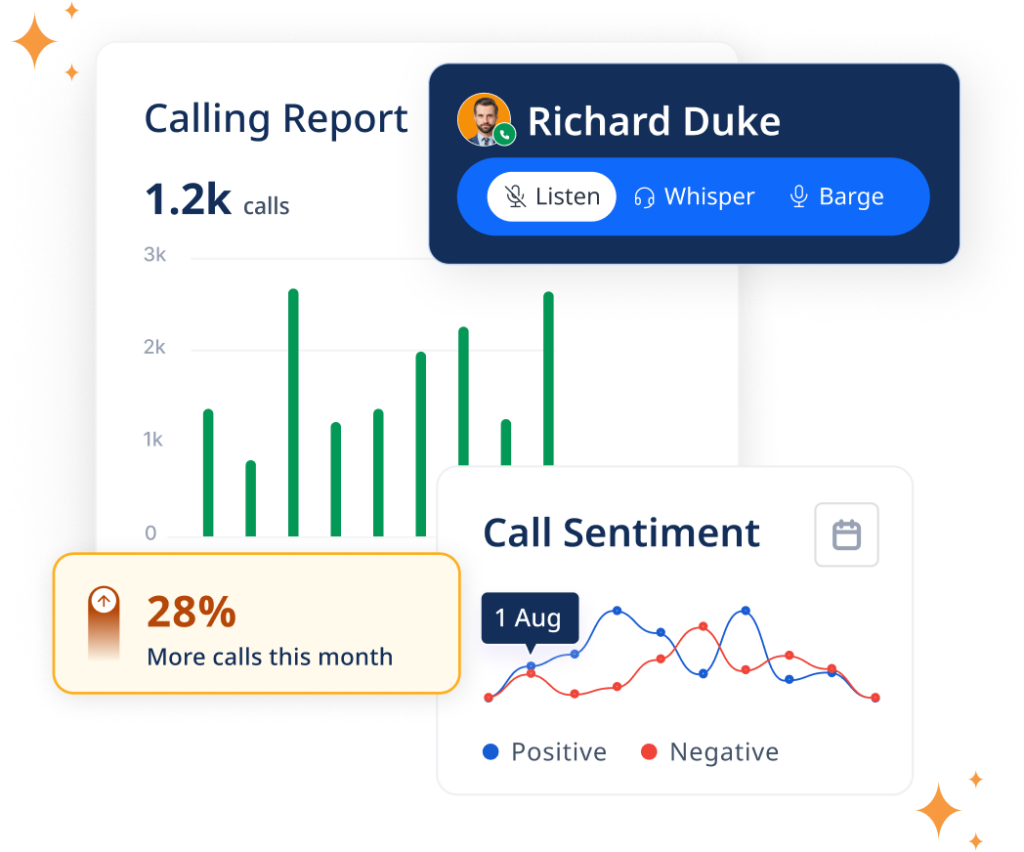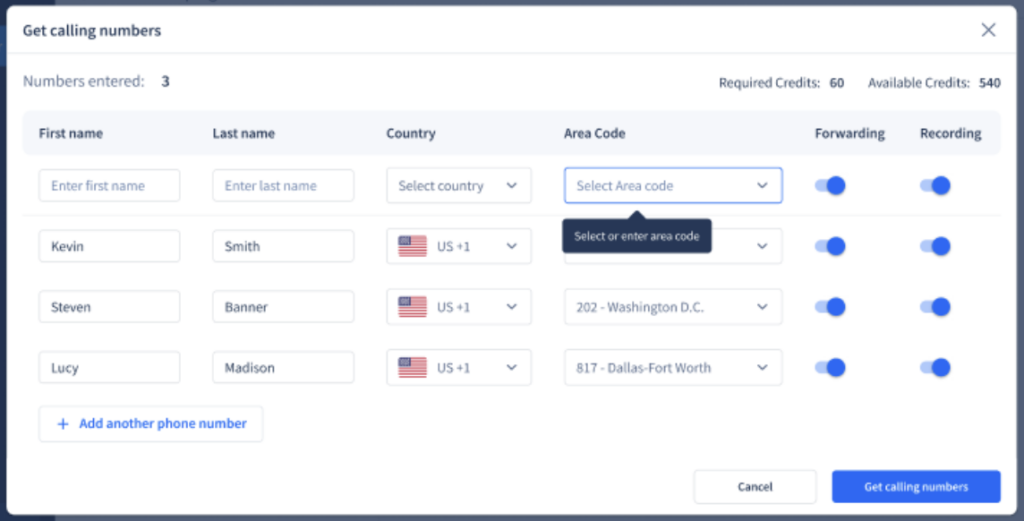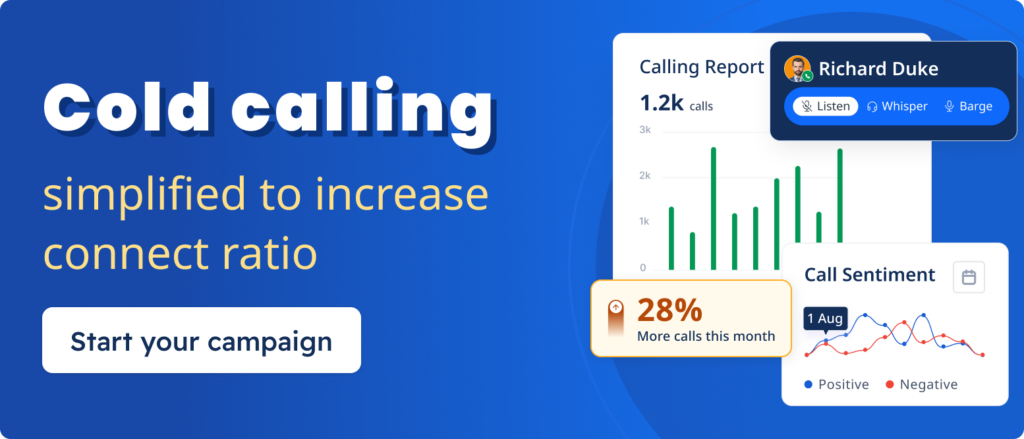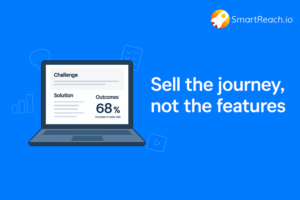Use Local 281 Area Code for Cold Calling
Houston sales teams know this challenge: prospects don’t answer cold calls from unfamiliar numbers. While you’re perfecting your pitch and timing, your caller ID might be sabotaging your success before you even speak.
Research consistently shows that prospects are 4 times more likely to answer calls from local area codes compared to toll-free numbers. For sales teams targeting the Houston metropolitan area, using a 281 area code phone number isn’t just helpful; it’s essential for competitive performance.
The 281 area code serves southeastern Texas in the Central Time Zone and represents your entry point to reaching over 7.4 million people across one of America’s most economically diverse business markets. It covers major business hubs, including The Woodlands, Sugar Land, and suburban Houston, home to 18 Fortune 500 companies.
Here’s everything you need to know about getting and using a 281 area code number to improve your cold calling results.
Where is area code 281 located?
The 281 area code covers southeastern Texas, primarily the Houston metro area, including Harris, Fort Bend, Montgomery, and Galveston counties. This area code is NOT in California or Florida, it exclusively serves Texas.
It spans major business hubs like downtown Houston, The Woodlands, and Sugar Land, plus key suburbs such as Katy, Baytown, Conroe, and League City.
This region is home to diverse industries, energy, healthcare, and tech, and 18 Fortune 500 companies like Phillips 66 and Halliburton.
Using a 281 area code signals local knowledge and credibility in one of the country’s most dynamic business markets.
Houston area code breakdown:
- 713: Original Houston area code, covers downtown and inner city
- 281: Covers northern and western suburbs (introduced November 2, 1996)
- 832: Overlay for both 713 and 281 areas
- 346: Newest overlay for additional capacity
For cold calling purposes, 281 often performs best because it covers suburban business centers where many decision-makers live and work.
Is 281 a scam or spam area code?
No, the 281 area code is a legitimate area code serving the Houston metropolitan area since 1996. However, like any area code, scammers can spoof 281 numbers to appear local and increase answer rates.
How to identify legitimate 281 calls?
Legitimate 281 calls typically:
- Come from established Houston-area businesses
- Have professional voicemails with company details
- Can be verified through reverse phone lookup
- Match expected outreach (you applied, requested info, or have business relationships)
Red flags for potential scams:
- Automated robocalls claiming urgent action needed
- Requests for personal information or payment details
- Threats or pressure tactics
- Calls about problems you don’t have (fake IRS, tech support, etc.)
Protecting your business reputation:
When using a 281 area code for legitimate cold calling:
- Always identify yourself and your company immediately
- Comply with Do Not Call (DNC) regulations
- Use verified caller IDs (like those provided by SmartReach)
- Keep calls professional and respectful
- Honor opt-out requests promptly
SmartReach.io automatically blocks DNC-listed numbers to keep your outreach compliant and protect your business reputation.
Why Local Numbers (Like 281) Boost Answer Rates?
Sales research shows a 4x increase in answer rates when using local numbers compared to toll-free ones.
- Toll-free answer rate: ~7%
- Local number answer rate: 28% +
Why it works?
It’s psychological.
When prospects see a familiar area code, they’re more likely to trust the call. This is driven by the “mere exposure effect,” people naturally respond better to what feels familiar.
And with 92% of people assuming unknown calls are scams, using a local number immediately reduces skepticism.
How to get 281 area code with SmartReach.io?
Getting started with an 281 number through SmartReach is fast, easy, and requires zero upfront commitment.
Here’s how to do it:
Step 1: Create your free account on SmartReach.io. No credit card needed.
Step 2: Explore SmartReach’s robust calling and outreach features during the 14-day free trial.
Step 3: Contact our support team to request a local 218 area code number.
Your number will be up and running within 4 hours, fully integrated with SmartReach’s powerful sales communication tools.
One platform. Zero hassle. Maximum outreach impact.
Why Get a 281 Area Code Phone Number with SmartReach.io?
SmartReach.io is an AI-powered sales engagement platform that helps you manage your cold outreach effortlessly.
Getting a local area code 281 phone number can be quite beneficial for your sales team.
SmartReach manages your outbound calling by automating key tasks helping reps save up to 10 hours per week and focus more on high-value conversations.
It is helpful by:
- Auto dialing – Eliminate manual dialing and reach more leads in less time.
- Voicemail drop– Drop pre-recorded voice messages for unanswered calls, keeping momentum without repeating yourself.

- AI-powered sentiment detection – Instantly gauge prospect tone and refine your pitch strategy based on real-time insights.

- Verified caller IDs – Get a professional 218 area code number with verified caller IDs to build trust and boost pickup rates.
- AI Call transcriptions – Every conversation is auto-transcribed for easy review and note-taking.
- Smart call routing – Forward calls to the right teammates for faster resolution and better prospect experience.
- DNC compliance – Automatically block calls to numbers on the Do Not Call list to stay compliant.
- CRM-connected dialer – Make calls right from your CRM and auto-log every interaction, no extra effort needed.
- Real-time call coaching – Use “listen,” “whisper,” and “barge” modes to support reps live during calls and tackle objections on the fly.

- Performance dashboards – Get detailed reports and campaign-specific analytics to track individual and team success.
- Call recording – Access full recordings to review conversations and enhance rep training.
- CRM integration – Sync call activity directly with your CRM for a seamless data flow.
- Local presence dialing – Display local numbers (like 218) to increase connection rates by appearing familiar to your prospects.
- Call analytics – Monitor key metrics to refine strategies and improve calling outcomes.

- Smooth integrations – Plug into your existing sales stack effortlessly for a unified workflow.
Other Area Codes Available on SmartReach
SmartReach makes it easy to build a local presence in key U.S. markets. Whether you’re targeting major metro hubs or regional business centers, we’ve got the area codes to help you connect:
- 213 (Los Angeles): Strengthen your outreach across Southern California.
- 415 (San Francisco): Ideal for engaging Bay Area startups and tech firms.
- 949 (Orange County): Connect with businesses in one of California’s fastest-growing regions.
- 818 (Los Angeles County): Reach prospects in the San Fernando Valley and surrounding communities.
- 212 (New York City): Essential for financial services, media, and corporate prospects in NYC.
- 646 & 332 (Manhattan): Expand into Manhattan’s dynamic business scene.
- 347 & 929 (New York City boroughs): Stay accessible across Brooklyn, Queens, Bronx, and Staten Island.
- 330 (Ohio): Target prospects in Akron, Canton, and Northeast Ohio.
- 425 (Washington): Build presence in Seattle’s Eastside tech and business corridor.
- 919 (North Carolina): Connect with companies in the Research Triangle and beyond.
- 817 (Texas): Strengthen your presence in Fort Worth and the Dallas metro area.
- 305 (Miami): Perfect for tapping into Florida’s vibrant market and Latin American connections.
- 202 (Washington, D.C.): Ideal for federal, legal, and policy-focused outreach.

With SmartReach, you can secure multiple area codes and create a powerful local presence across the country all while managing it seamlessly from one platform.
Best practices for cold calling in the 281 Houston market
Time it right (Central Time Zone)
- Top-performing windows:
- Late mornings (10–11 AM)
- Early afternoons (2–4 PM)
- Late mornings (10–11 AM)
- Best days to call: Tuesday to Thursday
- Tuesday leads the pack for highest meeting bookings
- Tuesday leads the pack for highest meeting bookings
- Avoid: Friday afternoons, prospects are winding down for the weekend
Tailor timing by industry
Houston’s economic diversity means your approach should flex by sector:
- Energy: Call early – between 7–9 AM – when field operations are being planned
- Healthcare: Stick to standard business hours
- Tech: More flexible, but standard hours still work best
Keep it short
- Keep your pitch under 5 minutes
- Long-winded calls drop success rates by up to 61%
- Houston professionals value direct, no-fluff communication
By aligning your outreach with local rhythms and industry nuances, you significantly boost your chances of sparking meaningful conversations.
Implementation timeline and next steps
Delaying implementation could mean missed opportunities, especially if your competitors are still relying on toll-free or out-of-state numbers.
By adopting a 281 area code, your team can immediately stand out with a stronger local presence in Houston.
Here’s a quick roadmap to get started:
- Week 1–2: Secure your 281 numbers and integrate them into your existing sales stack
- Week 3–4: Monitor performance data—track shifts in answer rates and conversation volume
- Week 5–6: Use insights to fine-tune your outreach strategy and hit peak performance
If you’re managing multiple territories, don’t forget to align your 281 implementation with territory planning, call volume allocation, and performance tracking across all area codes.
Get started with a 281 number, plug it into SmartReach’s cold calling platform, and see the uptick in answer rates, meetings booked, and pipeline growth, measurable, trackable, and repeatable.
Try SmartReach free for 14 days.
Frequently asked questions: 281 area code
What area code is 281?
281 is a US area code serving southeastern Texas, including the Houston metropolitan area and surrounding suburbs across Harris, Fort Bend, Montgomery, and Galveston counties.
What area code should you not answer the phone from?
While no area code is inherently dangerous, exercise caution with unfamiliar international codes or premium rate numbers. The 281 area code is legitimate and generally safe to answer as it serves the Houston business community.
Who calls from 281?
Calls from 281 numbers typically originate from businesses, residents, and organizations in the Houston metropolitan area, including energy companies, healthcare providers, technology firms, and other regional businesses.
What area code overlay is 281?
The 281 area code works with three overlays: 713 (original Houston area code), 832 (added 1999), and 346 (added 2014). All four serve the same geographic Houston region.
What is the most famous US area code?
The 212 area code covering Manhattan is often considered America’s most famous area code due to its association with New York City’s business district and frequent appearance in media.
Is 281 a US area code?
Yes, 281 is a legitimate US area code serving the Houston metropolitan area in Texas. It was introduced November 2, 1996, as part of the North American Numbering Plan.
How old is the 281 area code?
The 281 area code is 29 years old, having been activated on November 2, 1996, to provide additional phone number capacity for Houston’s rapidly growing metropolitan area.
Are 281 area code calls scams?
Not necessarily. 281 is a legitimate Houston area code, but scammers can spoof any number. Legitimate businesses use 281 for local presence. Be cautious of unexpected calls requesting personal information or payments.
What time zone is area code 281?
The 281 area code is in the Central Time Zone (CT). This includes observance of Central Standard Time (CST) in winter and Central Daylight Time (CDT) in summer.
Is 281 area code in California or Florida?
No, the 281 area code is exclusively in Texas, serving the Houston metropolitan area. It is not in California or Florida. Common confusion occurs because California and Florida also have Houston-named cities.




